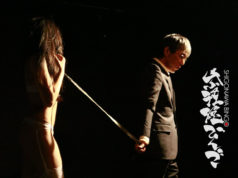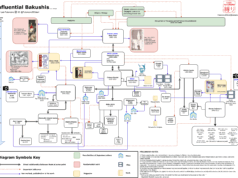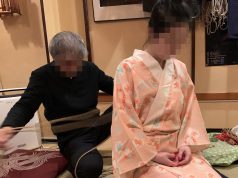As with all things Japanese, translating the meaning of a word into a western language is fraught with difficulty. Take the word aoi as a perfect example. It means green. It also means blue, because in the Japanese mindset, green and blue are the same colour, just different shades: the colour of the sea; the sky; the colour of water-based nature. Admittedly, when they want to distinguish shades, or articles that have distinctive hues of blue-green, they have words like hekishoku (green; emerald), or konpeki (deep blue; azure), etc. We have these differentiations too. But, we don’t generally have one word for both colours. We see blue and green as different.
If one consults a dictionary, kotobazeme is listed as ‘verbal abuse’. In the context of its use in our field, I wouldn’t say it was intentionally abusive, and much of the way it can function is potentially non-verbal. Clearly, it doesn’t translate well. 責め seme (zeme): persecution; blame; responsibility (from the kanji 責: blame, condemn, censure), and 言葉 kotoba: a manner of speaking, phrase; term; expression; remark, etc. It only really makes sense if you bring it into the critical frame of reference.
Now, it’s kotobazeme: dirty talk; insinuation; actions, from an erotic, dominant, sadistic perspective, directed towards the submissive, masochistic, willingly shamed. Add restraint, even just mentally, and it becomes psychological bondage. This isn’t like knots and ties; rope structures and patterns. It can’t be duplicated, because by its very nature, it is individual, and this being so, just like the effect of pheromones on sexual chemistry, it cannot function in all situations. But, when it does, it can be phenomenally powerful.
Kotobazeme is a technique that can magnify what we westerners would call ‘the mind fuck’; a way of getting one’s licentious persona into the libido of a partner, heightening the experience, inflaming the pleasure of their shame and/or compliance and/or masochism, etc. Turning them on within the scope of their standpoint. Critically, for the beneficiary, they have to desire what it is; what it can do; bring, or else it’s doomed to fail, and then is, just ‘verbal abuse’.
The man I would call The Master of Kotobazeme is Aotsuki Nagare san. He has elements very different to anybody else I’ve beheld in action. Notably, just having that experience as an observer is special, because kotobazeme can be so subtle and/or private, you’re very lucky to witness or absorb as a non-recipient. Aotsuki san uses deep bass tones from his diaphragm to make his communication otherworldly. What he’s saying, and the way he’s saying it amplify the effect. Contrarily, Yukimura san was more direct, quipping lascivious comments – more to induce shame than the anticipation of the pleasures of pain, but we’re talking very, very fine lines of detail.
I use the gravitas of dynamics. By saying very little, choosing the perfect moment, then asking, often rhetorically, the most succinct questions. These are designed not only to maintain, but increase the erotic. This is all wrapped within a bubble including how I interact using rope and my particular method of domination within the ethos of being the service provider.
I enjoy working with behaviourism and anticipation, and there I find I can get into the id; the psyche of my partner. ‘More or less?’ has now almost become a catchphrase. ‘Harder or softer?’ for when I need to balance my sadism against her masochism. ‘Remember me?’ when I’ve got her to an excitement trigger point she’s been conditioned to expect, etc.
By carefully building up the excitement from the pure beginnings of a spring into the gentle babble of a stream and into the widening flow of a river, I can bring my partner into the full hurricane of the ocean, riding the intense force of the storm. She becomes vigorously, distinctly aroused, and I continue the mind games until she aches for conclusion. Then I tease her some more, ‘You want me to touch you?’ She’s past a point, unashamed of her shame, the desire has overtaken any embarrassment. I’ll ensure she’s pleading out loud for me to proceed; shouting for my fingers as I’m denying her the moment, toying with her mind, her emotions. Sometimes all I’ve done is creeping my fingertips down her lower belly and onto her Mons, and she’s already climaxed. For it’s the mind, and not the genitals that dictate the conditions.
Kotobazeme is just a word, a foreign one, and words are meaningless versus actions. It will mean many things to many people. For me, it’s that special ingredient that makes rope play superlative; exceptional, and without it, I’d probably just be rigging.







